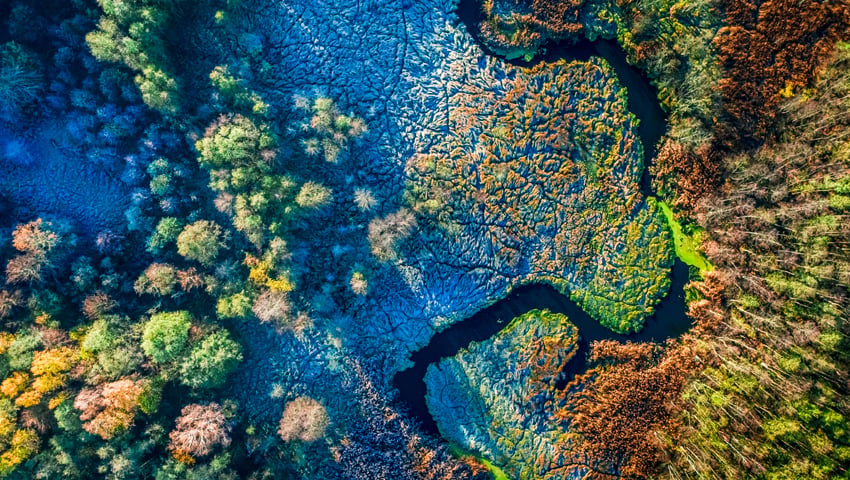As efforts to restore tree cover accelerate to help avoid runaway climate change, a new study highlights how restoring tree cover can, in some locations, heat up the Earth rather than cool it by affecting how much sunlight the surface reflects (the albedo effect).
The new study, led by researchers at Clark University in the United States alongside scientists from The Nature Conservancy (TNC) and ETH Zurich, and published in the journal Nature Communications, provides a global analysis of where restoration of tree cover is most effective at cooling the global climate system – considering not just the cooling from carbon storage but also the warming from decreased albedo.
In some locations, this warming can partially or even completely outweigh the benefit of increased carbon uptake by the trees. Many know of this problem, but it has been difficult to quantify the impact of albedo in specific locations.
Writing on Carbon Brief, study authors, Dr Susan Cook-Patton, Dr Natalia Hasler, Prof Christopher A Williams and Peter Ellis, say, “Restoring tree cover is now firmly established as a strategy for removing carbon from the atmosphere to help tackle climate change. But there is an elephant in the room when it comes to estimating just how promising a climate solution it is in different locations. This is ‘albedo’ – the fraction of the solar radiation that is reflected from the Earth’s surface. Because restoring tree cover often involves replacing brighter land covers – such as grasslands – with darker ones – namely, trees – this can lead to some degree of global warming.”
The researchers provide a tool that practitioners and land managers can use to determine just how much of a problem albedo is for any reforestation or afforestation project on the globe. The authors use these new maps to show that previously-published, ‘carbon-only’ estimates of the global climate mitigation potential of restoring trees worldwide provided significant overestimation, being anywhere from 20 to 81 per cent too high.
Because comprehensive maps of the consequences of albedo change were not previously available, these carbon-only estimates tend to identify too many options in landscapes – particularly semi-arid settings and snowy, boreal regions – where changes in albedo would significantly offset, or even negate, the carbon-removing benefits provided by these trees.
“The balance of carbon storage versus albedo change that comes from restoring tree cover varies from place to place, but until now we didn’t have the tools to tell the good climate solutions from the bad,” says lead author, Hasler, a research scientist at the George Perkins Marsh Institute at Clark University in Worcester, Massachusetts. “Our study aims to change that, providing the maps needed to empower smarter decisions while also ensuring that limited finance is directed at those locations where restoring tree cover can make the most positive difference as a natural climate solution.”
On the positive, the study also identifies locations within every biome on Earth where the climate mitigation benefits of tree-planting can be achieved. Better still, it also finds that most of the thousands of on-the-ground projects underway globally to restore tree cover are concentrated in these zones of greatest opportunity. Even in these locations, however, albedo changes are likely to offset the net climate benefit by at least 20 per cent in around two-thirds of cases.
Elaborating further on the team’s findings, co-author, Cook-Patton, a senior forest restoration scientist at The Nature Conservancy, said, “We’ve addressed a significant research gap and gained a much more complete picture of how restoring tree cover can impact our global climate – both positively and also sometimes negatively. However, it’s important to remember that there are many other sound reasons to restore tree cover, even in locations where the climate benefits aren’t stellar: clean water, resilient food production, wildlife habitat, the list goes on… We’re simply calling on governments and land managers to more carefully integrate albedo in their environmental decision-making and are open-sourcing this robust new set of tools to help them do so.”
Expanding on the study’s implications, co-author Thomas Crowther from ETH Zurich said, “This science reaffirms how a safe future climate for all requires protecting and restoring our forests, alongside sharp reductions in fossil fuel emissions. To work towards an equitable future we must cut our emissions and invest in nature.”
Read the study, Accounting for albedo change to identify climate-positive tree cover restoration
